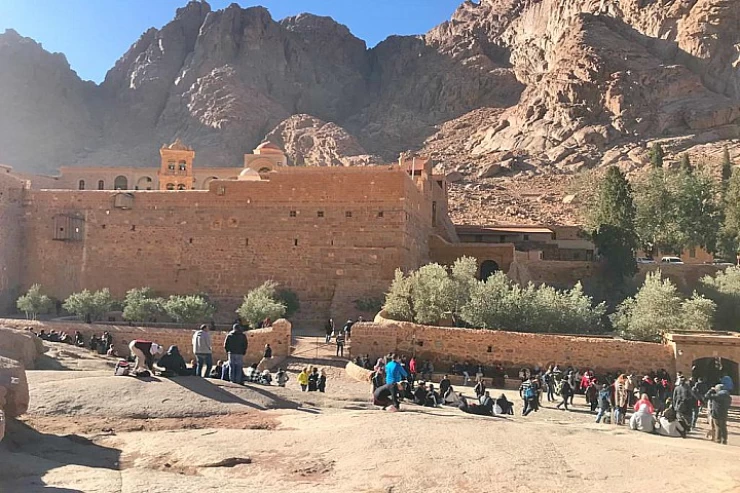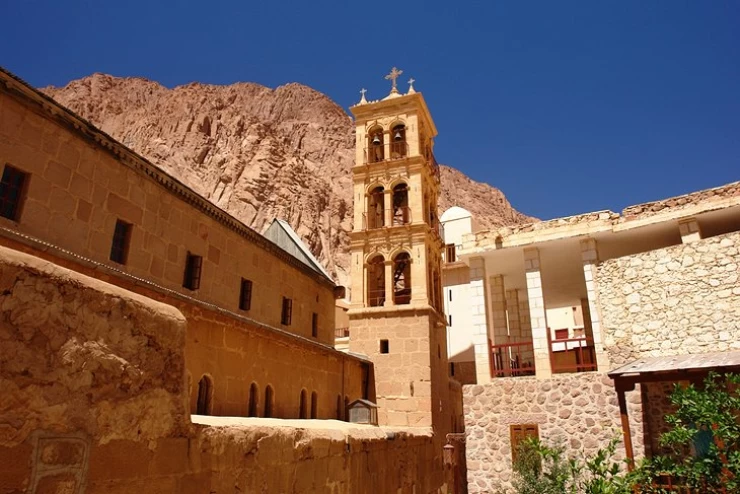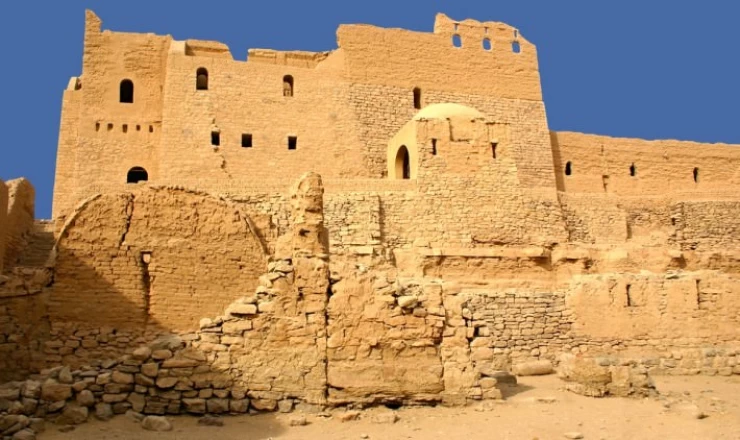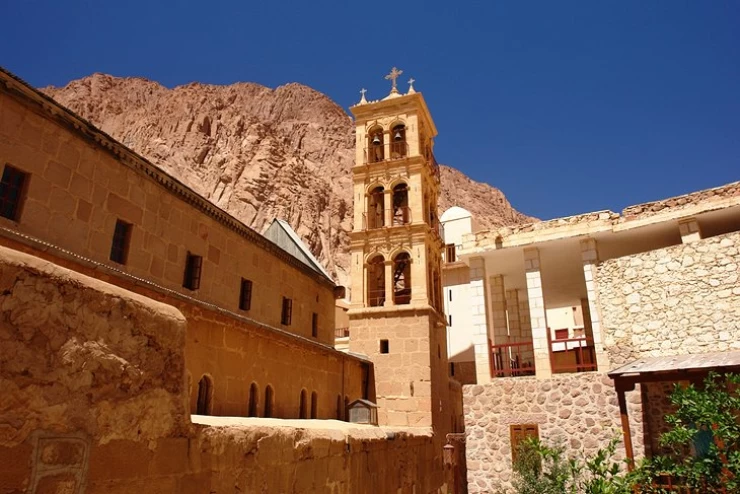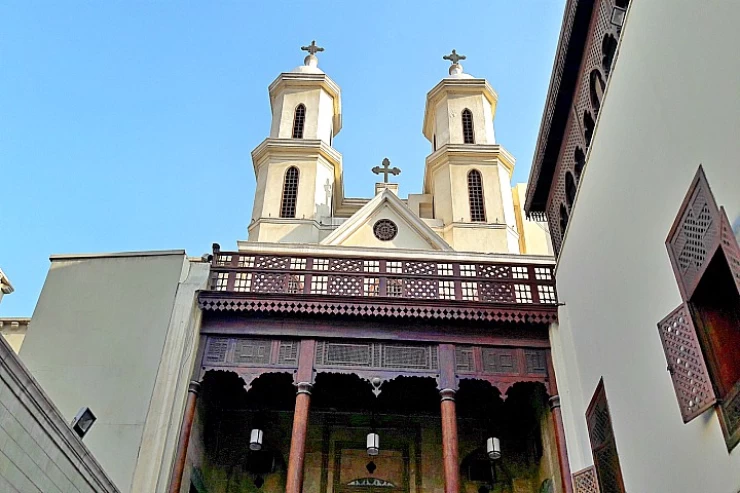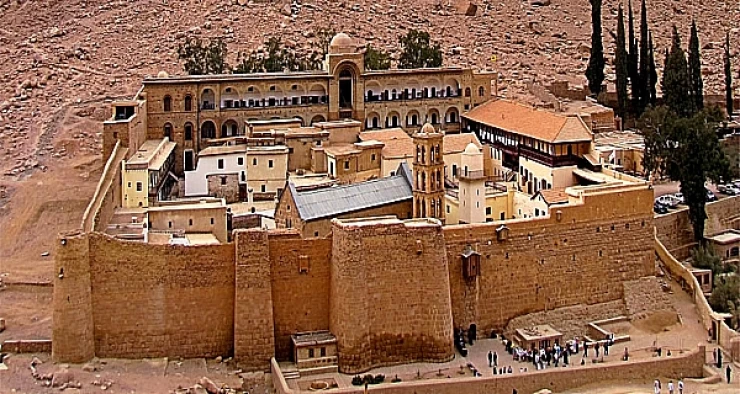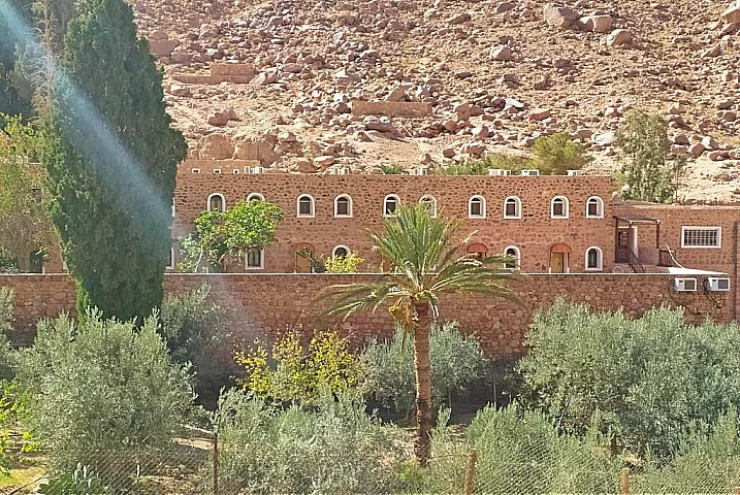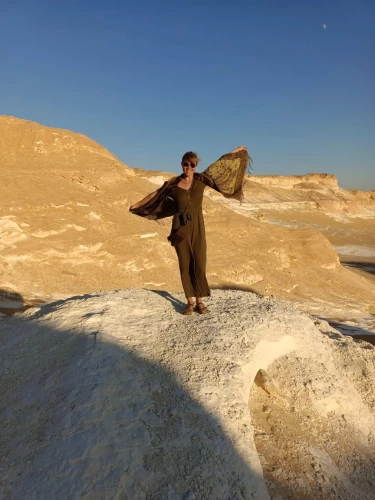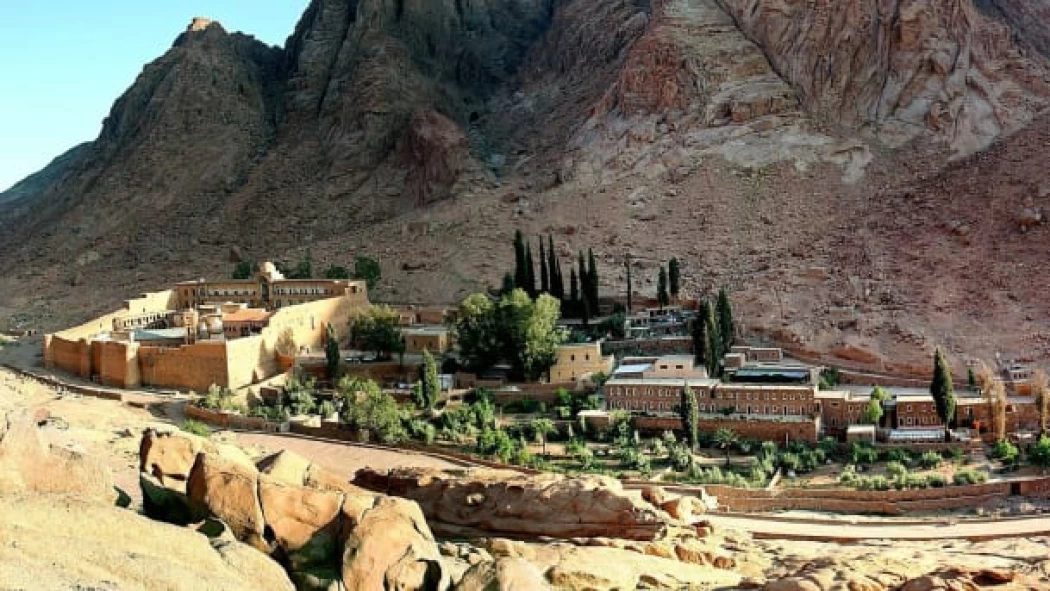
Saint Catherine Monastery
Saint Catherine Monastery, located on the Sinai Peninsula in Egypt, is one of the oldest Christian monasteries in the world and a site of profound historical, religious, and cultural significance. Its full name is the Monastery of Saint Catherine of Alexandria, and it is dedicated to Saint Catherine of Alexandria, a Christian martyr of the 4th century.
Historical Background
Founded in the 6th century by the Byzantine Emperor Justinian I, the monastery sits at the foot of Mount Sinai, traditionally believed to be the site where Moses received the Ten Commandments. This location was chosen for its remote and sacred nature, which made it an ideal place for monastic life. The monastery's establishment is closely linked to the traditions of early Christianity and the desire to preserve and protect the Christian faith in a region that was increasingly becoming a crossroads of various religious and cultural influences.
Architecture and Art
Saint Catherine Monastery is renowned for its remarkable architectural and artistic features. The complex includes a fortified enclosure with a series of chapels, including the main church, which is built in the form of a basilica. The church’s interior is adorned with stunning mosaics, including a notable mosaic of the Transfiguration of Christ on the apse.
One of the most significant aspects of the monastery is its collection of early Christian and Byzantine manuscripts and artifacts. The monastery houses one of the world’s oldest surviving libraries, containing a vast array of texts in Greek, Latin, and other languages. Among its most prized possessions is the Codex Sinaiticus, one of the oldest complete manuscripts of the Christian Bible.
Religious Significance
The monastery has been a center of Christian pilgrimage for centuries, revered as a holy site due to its association with the biblical story of Moses. It has played a crucial role in preserving Christian traditions and texts, especially during periods of persecution and political upheaval. Despite its remote location, the monastery has remained a place of refuge and spiritual significance.
Cultural Impact
In addition to its religious importance, the monastery is a treasure trove of art and history. Its icons, manuscripts, and relics offer invaluable insights into early Christian art and theology. The monastery has been a focal point for scholarly research and has contributed significantly to our understanding of early Christian practices and the development of monasticism.
Latest Articles
Admin
Aswan Governerate in Egypt
Aswan was known as ‘Sonu’ in ancient Egyptian times, meaning market, as it was a trading centre for caravans coming to and from Nubia. In the Ptolemaic era, it was called ‘Sin’ and the Nubians called it ‘Yaba Swan’. It was also known as the Land of Gold because it served as a great treasure or tomb for the kings of Nubia who lived there for thousands of years. Before the migration, Aswan's borders extended from Asna in the east to the border of Sudan in the south, and its inhabitants were Nubians, but after the Islamic conquest of Nubia, some Arab tribes settled there.
Admin
About Luxor Governorate in Egypt
The South Upper Egyptian area is home to the Egyptian governorate of Luxor. Its capital is Luxor, which was formerly Thebes, the capital of Egypt throughout multiple pharaonic eras. Its centers and cities are spread over both sides of the Nile River. The said governorate was established by Presidential Decree No. 378 of 2009, which was promulgated on the 9th of December of that year.
Admin
History of kafr El Sheikh Governorate
Kafr El Sheikh Governorate, located in the far north of Egypt in the Nile Delta, overlooking the Mediterranean Sea, is characterised by the diversity of natural life and environments, and is one of the Egyptian cities that can be visited after the end of the first semester exams at universities and schools, as it features many diverse tourist and recreational places at symbolic prices within everyone's reach.
Admin
Egypt's New Administrative Capital
The New Administrative Capital is considered the project of the era because it reflects a perfect image of the future and progress on the economic, cultural, social and civilisational level, as the capital is considered the new capital of Egypt at the present time. The importance of the New Capital is that it is a comprehensive transformation of the future of buildings, services and national and mega projects in Egypt.
Admin
Al Gharbia Governorate
The Governorate of Gharbia is inclusive in the geographical area of The Arab Republic of Egypt which is in the African continent, more specifically in the region surrounding the Nile delta, between Damietta and Rashid governance. To the control of the region from the north is Kafr El-Sheikh Governorate, from the south Menoufia Governorate, from the east – Dakahlia, Qalyubia Governorates, and to the west is the Beheira Governorate.
Admin
Hamata Islands (Qulaan Archipelago) in Marsa Alam
Each reserve has several sectors. In Wadi El Gemal Reserve, there is one of the natural areas called the Hamata area or Hamata sector in Wadi El Gemal Reserve. Its sectors are the perfect and most ecological, land and water, and host countless animals and plants found in the oceans and on the land.






